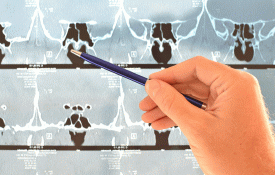Sinusitis is one of the most common health problems prevalent in our country today, affecting 37 million people and resulting in 20 million visits to physicians annually. As such, one in 10 Americans suffer from this debilitating condition at one time or another, and seven million people in the U.S. suffer from chronic sinusitis, with symptoms lasting for more than 12 weeks. In this article, I shed light on the topic by answering some basic questions about this debilitating condition and discussing some of the new, minimally invasive options available to treat patients.
1. What are sinuses and what do they do?
The sinuses are air-filled pockets in the face located around the eyes, teeth, and nose that act as air-bags in case of trauma to the head to prevent injury directly to the brain. They also help prevent infection going directly from the nose to the eyes or brain. However, their most important function is to filter and humidify the air we breathe through our nose. As such they are an important component of the upper respiratory tract and serve various functions.
2. What is chronic sinusitis?
This is a condition where one complains of chronic symptoms of facial pain over the sinuses, purulent nasal discharge, nasal congestion, low-grade fevers, cough, mouth breathing, and other symptoms for over 12 weeks. These individuals usually have been refractory to multiple medications by the time they come to see a rhinologist (nose/sinus specialist).
3. What causes chronic sinusitis?
The most common cause is allergic rhinitis (aka allergies). Environmental allergies cause swelling of the nasal/sinus mucosa which then obstructs the sinus openings leading to stagnant mucus and recurrent infections. This is termed chronic allergic rhinosinusitis. Other causes include toxic fumes, smoking, fungal processes, autoimmune disorders, inhaled drugs and OTC drugs (i.e. Afrin), polyps, as well as any process that causes inflammation in the nose. As such, this is an inflammatory process and not an infectious process as previously thought by many.
4. What are the options for treatment of chronic sinusitis?
There are a number of options to treat chronic sinusitis. First line medical treatment options include nasal steroid or nasal antihistamine sprays, nose/sinus saline rinses, oral antihistamines, oral decongestants, oral steroids, or extended oral antibiotic regimens.
If medical treatment options are not successful then in-office Balloon Sinuplasty™ or Minimally Invasive Image-Guided Endoscopic Sinus Surgery (MIGSS™) are options that are routinely performed at SCSI. It is critical that your rhinologist (nose/sinus specialist) selects the appropriate procedure for you. Both of these procedures provide excellent relief to patients suffering from chronic sinusitis for years with little discomfort or downtime.
What is Balloon Sinuplasty™?
This is a procedure that has gained a significant amount of press over the past three years as a non-invasive option for patients with chronic sinusitis. During this simple in-office procedure, a balloon is inserted into the sinus openings or ostia that are blocked and then dilated gently. It is a great treatment option for patients with mild to moderate chronic sinusitis, recurrent sinus infections, or chronic sinus headaches. Most often this procedure can be done in the office under local anesthesia in about 30 minutes. All of my patients return to work the following day, and there is no packing or bleeding after the procedure. Patients are amazed by the ease of this procedure.
However, patients who are not candidates for this procedure or have more advanced sinus issues will undergo a Minimally Invasive Image-Guided Endoscopic Sinus Surgery (MIGSS™) as a simple outpatient procedure.








































